Great Trees
Image

Image
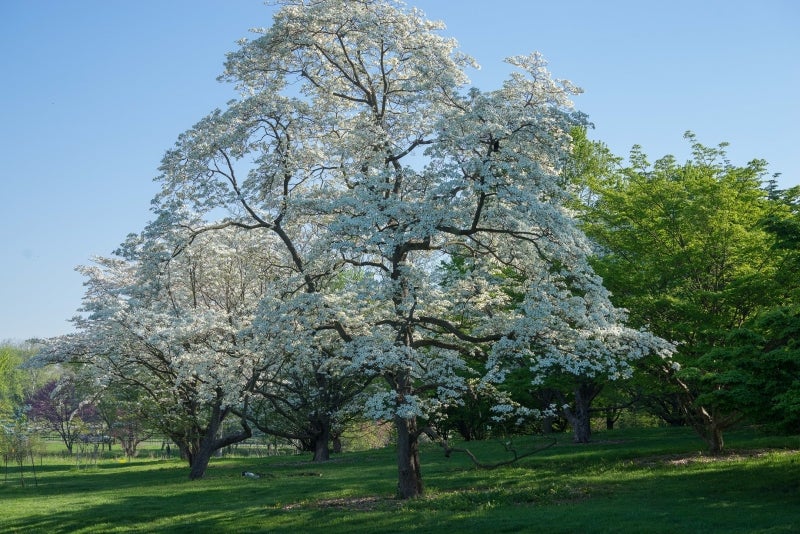
One of the most admired features of the Morris Arboretum & Gardens is its collection of large and beautiful trees. When John and Lydia Morris first purchased the property in 1887, it was virtually devoid of trees. They soon launched into an intense tree-planting program and under careful nurturing, these trees have grown into the beautiful specimens for which the Morris is well known today.
Great Trees Highlights
Image
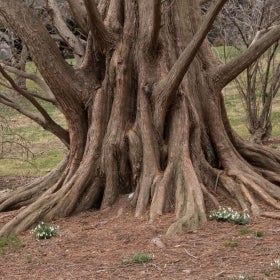
Dawn-redwood
Metasequoia glyptostroboides
- A fast-growing tree with a majestic habit, golden fall color, reddish brown bark – fissured and exfoliating in long narrow strips – and a spectacular buttressing fluted trunk.
- This beautiful grove, now over 100 feet tall, was planted in ideal conditions – full sun and next to a stream that provides moisture.
- Once thought to have been extinct, these trees from the end of the dinosaur age were rediscovered in China through the study of fossils in the 1940s.
Image

Ginkgo, maidenhair-tree
Ginkgo biloba
- One of the world’s oldest tree species, growing on earth for well over 150 million years.
- With striking gold fall color, this female specimen, planted by the Morrises, has messy and very smelly fruit. Non-fruiting males make excellent city trees.
- A male specimen is near the Edith Bogue magnolia
Image
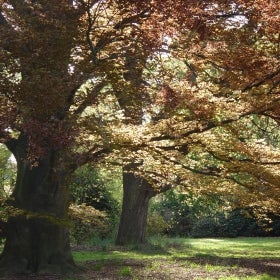
Weeping European beech
Fagus sylvatica f. pendula
- Native to Europe, planted before 1909 by the Morrises.
- Branches weep down and form roots where they touch the ground. New rings of trees grow outward as the original tree ages and dies.
- An impressive tree in all seasons with its smooth gray elephant hide-like bark, lustrous green leaves in summer, and red to golden brown fall color.
- Small holes in trunk are made by sap sucking birds.
Image

Blue Atlas cedar
Cedrus atlantica ‘Glauca’
- The straight species is native to the Atlas Mountains of North Africa.
- Layered branches with blue-green needles create a picturesque landscape tree.
- Small finger-shaped male cones on lower branches pollinate attractive large beehive-shaped female cones above.
Image
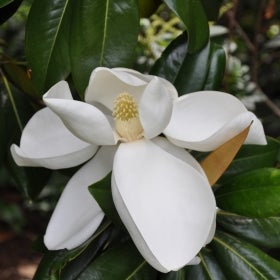
Edith Bogue southern magnolia
Magnolia grandiflora ‘Edith Bogue’
- This cultivar is a descendent of a tree in Edith Bogue’s New Jersey garden that survived a particularly harsh winter.
- A spectacular tree in all seasons: large lemon-scented creamy white flowers in spring/summer, bright red seeds set in velvety fall fruit, and lustrous dark evergreen leaves.
- Ornamental leaves ideal for decorative arrangements.
Image
Katsura-tree
Cercidiphyllum japonicum
- Native to Japan and China, planted around 1902 by the Morrises.
- One of the largest of its kind in North America, this plant is the signature tree of the Arboretum.
- Bright yellow/apricot leaves in fall release a spicy cinnamon/ brown sugar aroma.
Image

Lacebark pine
Pinus bungeana
- Native to China, this stately lacebark pine, is one of the largest in the Delaware Valley.
- Striking exfoliating bark changes color with age and moisture.
- Fine-textured foliage gives an airiness to the crown.
Image
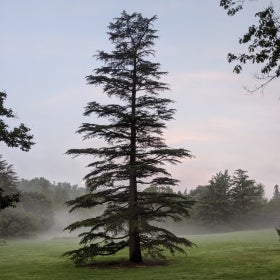
Hardy Cedar-of-Lebanon
Cedrus libani ssp. stenocoma
- This subspecies is native to the mountains of southwest Turkey and has an upright habit.
- The straight species, known for its historic stands in Lebanon, has more wide- spreading branches.
Image
Japanese zelkova
Zelkova serrata
- Native to China, Korea and Japan, this tree has been growing at the Arboretum since the Morrises’ time.
- Often used as a street tree, it has beautiful bark, a vase shape and red-orange fall color.
Image
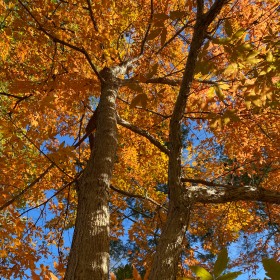
Threeflower maple
Acer triflorum
- Native to northeast China and Korea,
this small upright-spreading tree with
flowers in clusters of three has ash brown vertically fissured bark. - Orange-red fall color.
Image
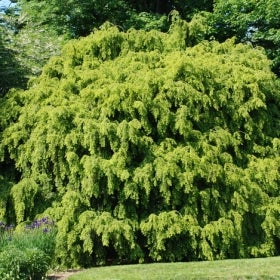
Weeping Canada hemlock
Tsuga canadensis f. pendula
- A rare tree, approximately 100 years old.
- This form was displayed at the Centennial Exposition at Fairmount Park.
Swan Pond Cluster
Image

Dwarf eastern white pine
Pinus strobus ‘Nana’
- A cultivated variety, this tree has a compact rounded habit.
- A very large example of a dwarf tree.
Image
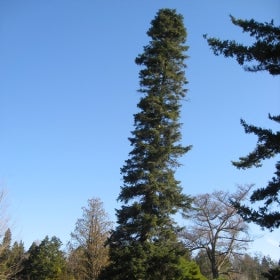
Cilician fir
Abies cilicica
- Native to the Taurus Mountains of Turkey, Syria and Lebanon, this tree has a narrow growth habit.
- Part of our national fir collection.
Image
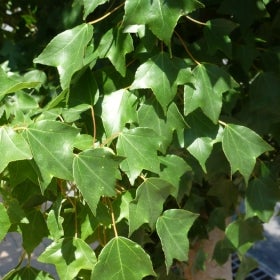
Trident maple
Acer buergerianum
- Native to China, this specimen is larger than most trident maples.
- Three-lobed leaves, which give this tree its common name, turn yellow/orange/ red in fall.
- Handsome and adaptable tree.
Image

Tatar wingceltis
Pteroceltis tatarinowii
- One of the rarest plants in the Arboretum’s collection and one of the largest of the species outside its native China.
- Beautiful yellow fall color.
- Attractive gray-brown exfoliating bark.
Image
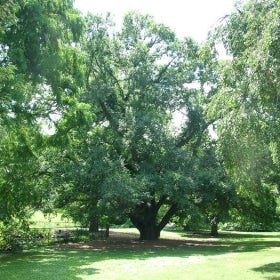
Chinese elm
Ulmus parvifolia
- Native to Eastern Asia, this plant’s exfo- liating bark, fall color, and fine-textured foliage make it excellent for any landscape.
- Known for its rapid growth and durability.
- Resistant to Dutch elm disease and the elm leaf beetle.
Image
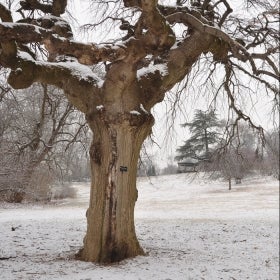
Tabletop Scotch elm
Ulmus glabra ‘Horizontalis’
- Inspired by the Victorian fascination with weeping and contorted trees, the Morrises planted this tree sometime before 1909.
- Weeping portion of the plant was grafted high onto its 7-foot understock, forming the umbrella-like shape.
- Unusual accent tree.
Image

Yellow buckeye
Aesculus flava
- Native to eastern United States.
- Flaky bark, yellow flower clusters, and yellow-orange fall color make this a useful native alternative to the disease prone horsechestnut.
- The tree has recovered from 1991 tornado damage.
Bark Park
Image
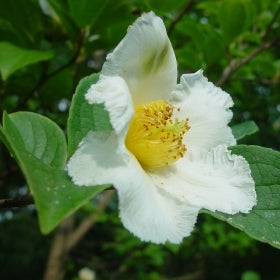
Japanese stewartia & Tall stewartia
Stewartia pseudocamellia & Stewartia monadelpha
- Native to eastern Asia, these trees have
early summer white flowers, yellow to red to burgundy leaves in fall, and attractive exfoliating bark. - Mature height is 20 to 40 feet.
Image
Paperbark maple
Acer griseum
- Native to western China, with outstanding cinnamon/reddish brown exfoliating bark, this is an attractive small specimen tree.
- Orange-red fall color.